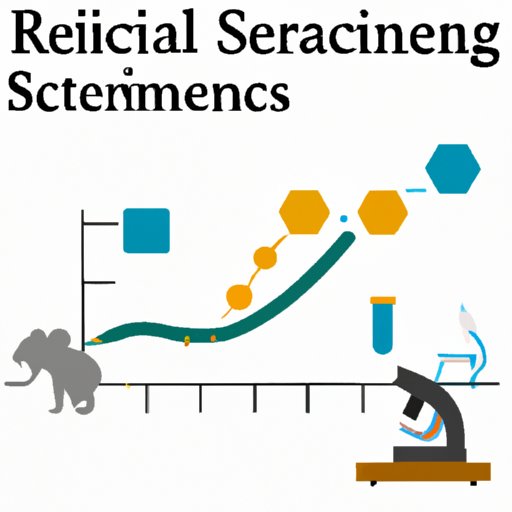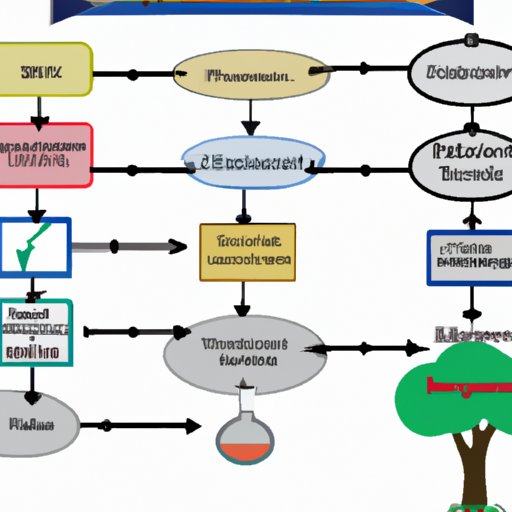Introduction
The science process is a systematic approach used to investigate and answer questions about the natural world. It involves identifying a problem or question, forming a hypothesis, gathering data, analyzing results, and drawing conclusions. A common tool used to represent the science process is a flowchart, which provides a visual representation of the steps involved in scientific research.
Explaining the Science Process Through a Flowchart
Flowcharts are diagrams that show the sequence of steps taken to reach a desired outcome. They are commonly used to illustrate processes, including procedures, algorithms, and workflows. In the context of the scientific process, a flowchart can be used to break down the individual steps of the scientific method and provide a clear visual representation of the entire process.
The scientific method consists of six main steps: ask a question, conduct background research, develop a hypothesis, test the hypothesis, analyze the data, and draw a conclusion. Each step of the scientific method can be represented in a flowchart using symbols such as arrows to indicate the order of the steps, boxes to represent each step, and diamonds to indicate decisions. By creating a flowchart, scientists can easily visualize the entire scientific process and better understand the relationship between the steps.

Creating a Visual Representation of Scientific Research
Flowcharts are useful for understanding how the scientific process works, but they can also be used to create a visual representation of a particular experiment or study. By breaking down the steps of the experiment, scientists can use a flowchart to map out the entire procedure from start to finish. This makes it easier to identify any potential problems before beginning the experiment and to track progress along the way.
To create a flowchart for a scientific experiment, start by identifying the goal of the experiment and then list out the steps that need to be taken to reach that goal. Using the symbols mentioned above, create a diagram that shows the sequence of steps, the decisions that need to be made, and the outcomes of each step. This will create a visual representation of the experiment that can be used to effectively plan and monitor the progress of the project.
Conclusion
Flowcharts are a powerful tool for understanding and representing the science process. By breaking down the individual steps of the scientific method, scientists can create a visual representation of the entire process and use it to plan and monitor their experiments. Flowcharts can also be used to create a visual representation of a specific experiment, allowing scientists to more easily identify potential problems and track their progress along the way.
Using flowcharts to represent the science process is an effective way to understand and explain scientific research. It provides a clear visual representation of the steps involved and helps scientists plan and monitor their experiments more efficiently.
(Note: Is this article not meeting your expectations? Do you have knowledge or insights to share? Unlock new opportunities and expand your reach by joining our authors team. Click Registration to join us and share your expertise with our readers.)
